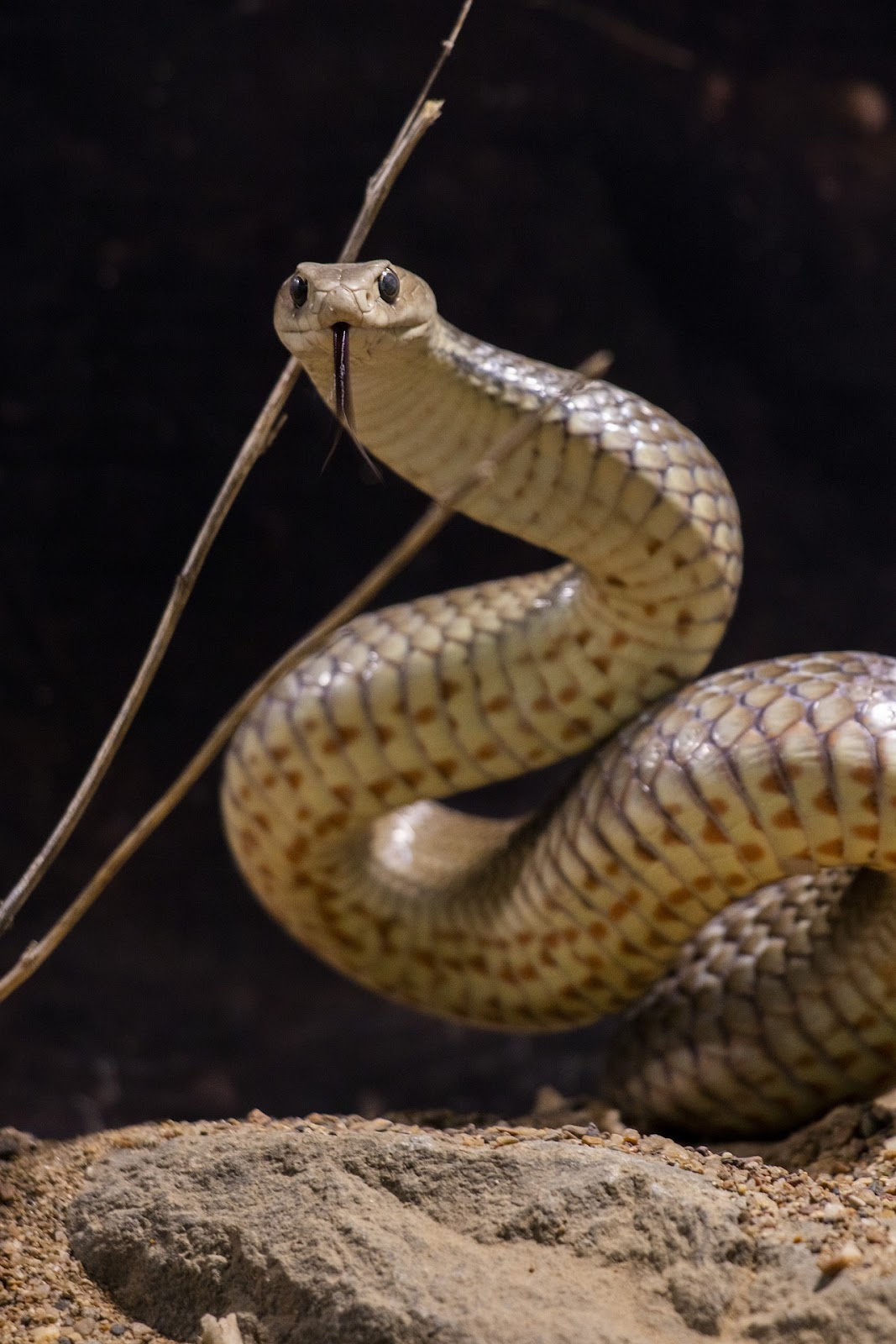Introduction:
Venomous snakes are a source of fascination and fear for
many people around the world. While most snakes are harmless to humans, there
are some species that are highly venomous and can cause serious harm or even
death if bitten. Understanding the dangers posed by these deadly snakes is
important for anyone who lives or travels in areas where they are found.
Inland Taipan:
The Inland Taipan is native to the arid regions of central
Australia, particularly the states of Queensland and South Australia. It
inhabits remote areas of scrubland and rocky terrain, where it feeds on small
mammals and reptiles. Despite its reclusive nature, the Inland Taipan is
considered an important part of the Australian ecosystem and conservation
efforts are in place to protect its habitat and prevent the species from
becoming endangered.
Despite its venomous nature, the Inland Taipan is not
considered particularly dangerous to humans. This is because the snake is very
reclusive and generally avoids human contact. In fact, there have been very few
recorded instances of Inland Taipan bites in humans and there have been no
recorded deaths from its venom. However, if you do happen to encounter an
Inland Taipan in the wild, it's best to give it a wide berth and avoid any
unnecessary risks. It's also important to note that the Inland Taipan is a
protected species in Australia and is illegal to keep as a pet.
Eastern Brown Snake:
The Eastern Brown snake is found throughout eastern and
central Australia and is commonly encountered in urban areas, particularly in
the warmer months when it is more active. It prefers open grasslands and
woodland habitats, but can also be found in suburban gardens and other
human-modified environments.
Despite its fearsome reputation, the Eastern Brown snake is
generally not aggressive towards humans and will usually only attack if it
feels threatened or cornered. However, it is important to treat all snakes with
caution and respect and to seek immediate medical attention if bitten. In
Australia, antivenom is widely available and has greatly reduced the mortality
rate from snakebite.
Black Mamba:
The Black Mamba is found in a variety of habitats, including
savannas, woodlands and rocky outcroppings and it is particularly common in
areas with high rodent populations. It is a fast and aggressive snake and will
readily strike if it feels threatened or cornered.
Despite its fearsome reputation, the Black Mamba is
generally not aggressive towards humans and will usually only attack if it
feels threatened. However, its speed and agility make it a formidable opponent
and it is considered one of the most dangerous snakes in the world. If you are
traveling in areas where Black Mambas are found, it's important to be aware of
their presence and to take appropriate precautions, such as wearing protective
clothing, shoes and carrying a snakebite kit.
Russell's Viper:
Russell's Vipers are found in a variety of habitats,
including forests, grasslands and agricultural areas and are particularly
common in areas with high rodent populations. They are known for their
aggressive behaviour and will readily strike if they feel threatened or
cornered. In addition to their potent venom, Russell's Vipers are also known
for their long fangs, which can exceed 2 cm in length.
If you are traveling in areas where Russell's Vipers are
found, it's important to be aware of their presence and to take appropriate
precautions, such as wearing protective clothing, shoes and carrying a
snakebite kit. Immediate medical attention is essential if bitten, as antivenom
treatment can be lifesaving.
Saw-scaled Viper:
Saw-scaled Vipers are named for the sound they make when they
rub their scales together, which is a distinctive hissing or rasping noise.
They are small and fast-moving snakes that are often found in arid and
semi-arid regions, including deserts, scrublands and agricultural areas. They
are known for their aggressive behaviour and will readily strike if they feel
threatened or cornered, making them a significant danger to people who live and
work in areas where they are found.
If you are traveling in areas where Saw-scaled Vipers are
found, it's important to be aware of their presence and to take appropriate
precautions, such as wearing protective clothing, shoes and carrying a
snakebite kit. Immediate medical attention is essential if bitten, as antivenom
treatment can be lifesaving.
Conclusion:
Knowing about the deadliest snakes and their characteristics
is crucial for anyone who may come into contact with them. While snakes are an
essential part of many ecosystems and should be respected and protected, it's
important to take appropriate precautions when living or traveling in areas
where venomous species are present. By understanding the risks and taking steps
to protect yourself, you can help minimize the dangers posed by these
fascinating but deadly creatures.





Comments
Post a Comment